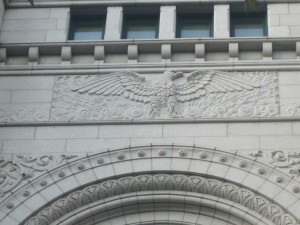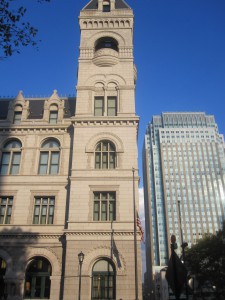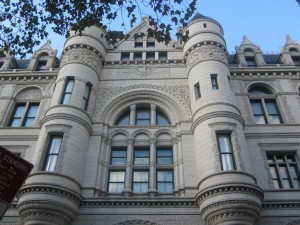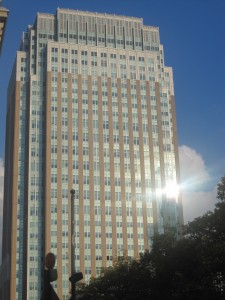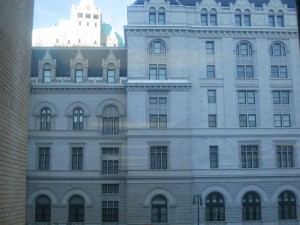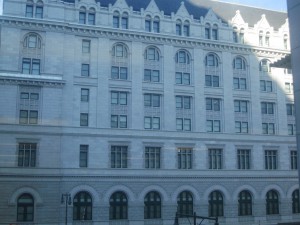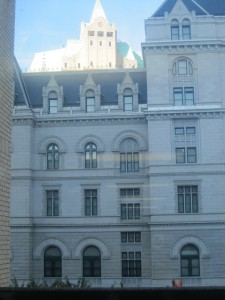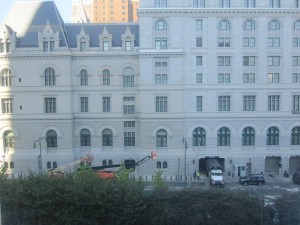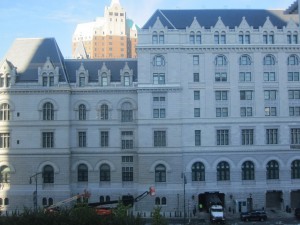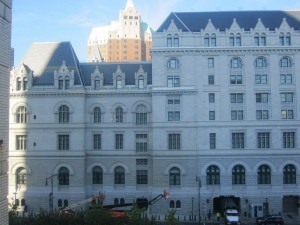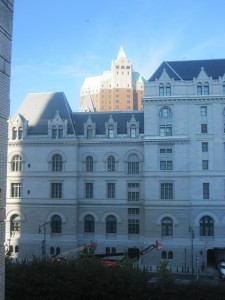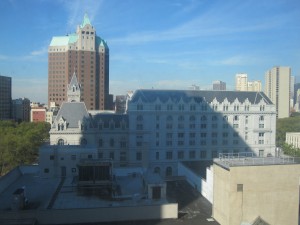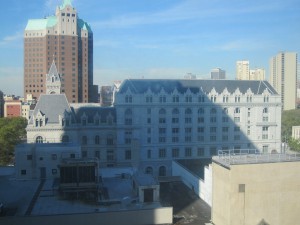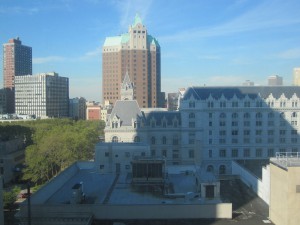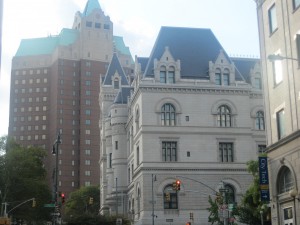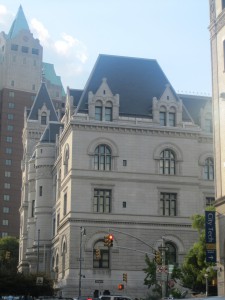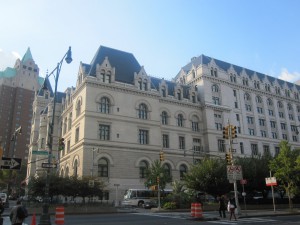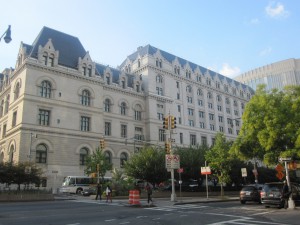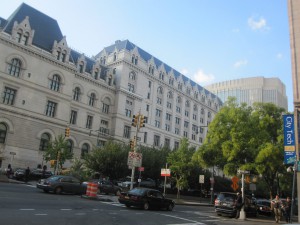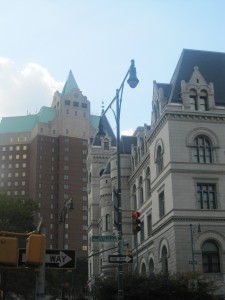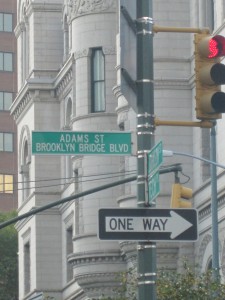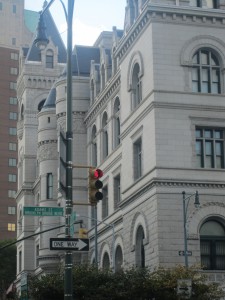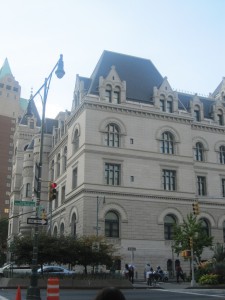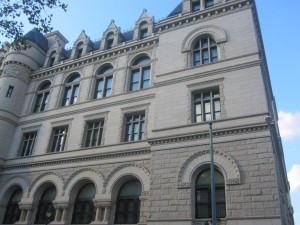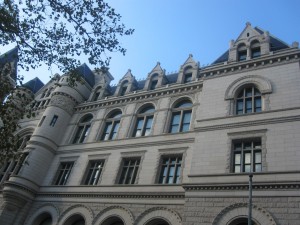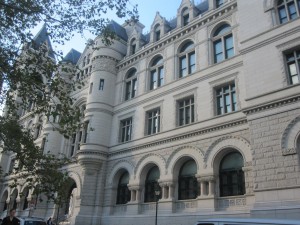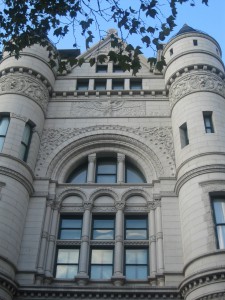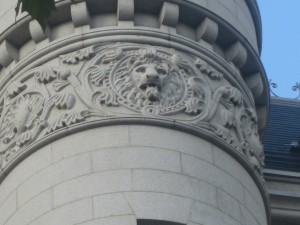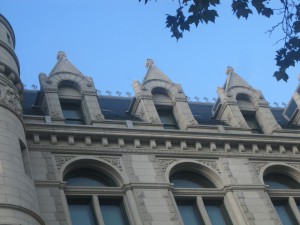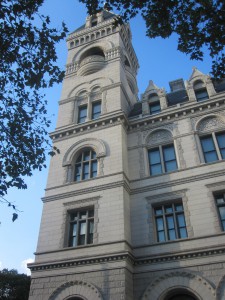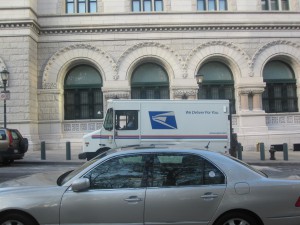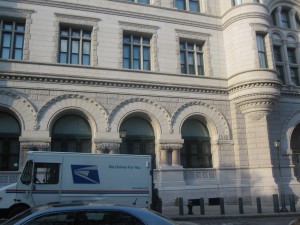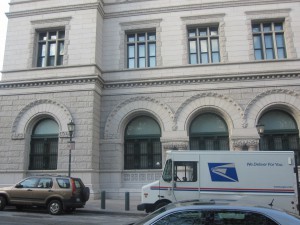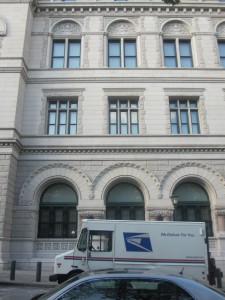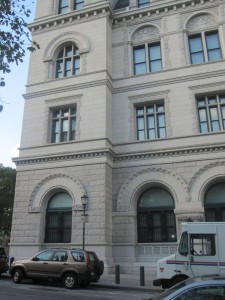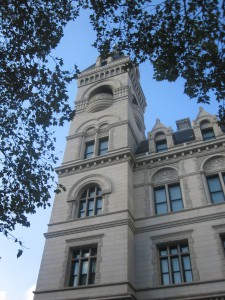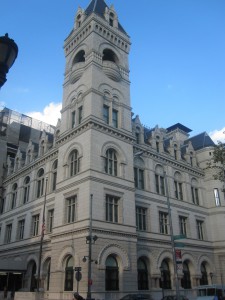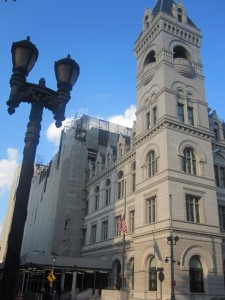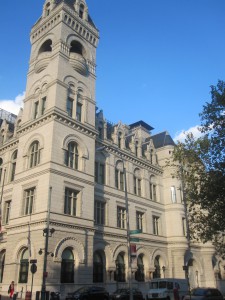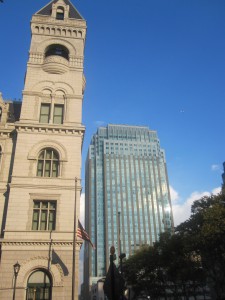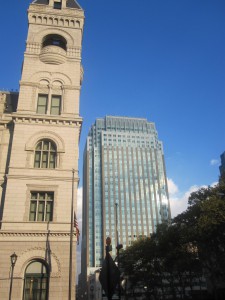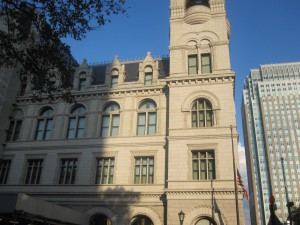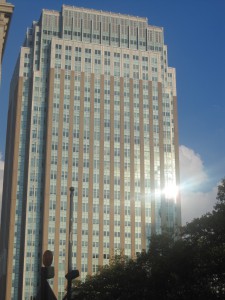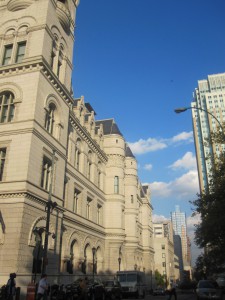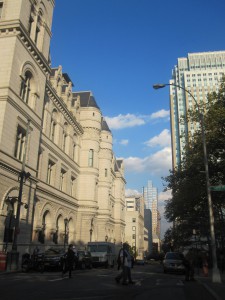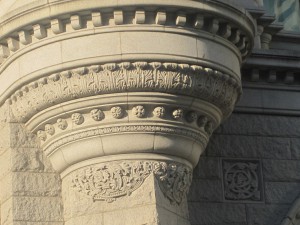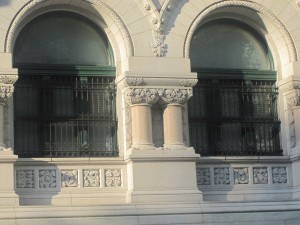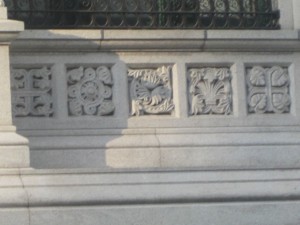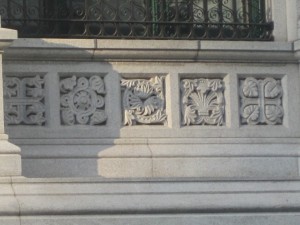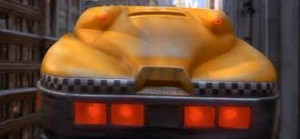A Tale of Stone and Glass
A wall made of stone is seen by many as an unmovable or impenetrable object created and used in a time long passed. Something you may find half destroyed in the English countryside or redone in the German alps. Although stone is seen as a worse material to be used today by most, it still holds its place in our minds. Because of its nature as a difficult material to work and transport in older times, we still see it as it was back then. Therefore it is a statement to have it used in modern day construction. It brings with it the imagery of knights in armor, royal beauty and splendor and a sense of sternness. Also unlike brick, stone can be worked on to have magnificent carvings and figures. That is what you see when you look upon the Federal building and post office which is behind City Tech and across Adams St. A beautiful white and gray stone building with a 5 story tower, arches above every window, gate towers at the entrance with an eagle carved above and lion heads on the towers themselves. There is a small discrepancy between the original build in 1891 and the expansion added in 1933, which could be seen as juxtaposition in itself. The original has more detail on the face of it with arches, towers and engraving. The newer section is more focused on functionality and having less of the style found on the old while trying to stay close to it. Then there is the fact that is it both a courthouse and the base of operations for Brooklyn’s post service.
However, upon learning of it’s function as a courthouse one can not help and glance at the Kings County Supreme Family Court that towers over the Federal Building and outshines it as well. The reason for this is simply time and advances in construction technology. However, for all the advantages in speed and ease of construction, there is a loss of style and grandeur. We are capable of rising a skyscraper from below ground level in the same amount of time that a small house in the 1700’s would be complete. Nevertheless our buildings are simple, uniform and have no identity. The few that are not are spread over the entire globe and still are identical inside. It is true that you can not make sculptures out of glass 5o feet or higher in the air which needs to be flat to function as windows. However, that did not stop the Empire State building or the Chrysler building from going down a different path. This was not the case with the Kings County Family Court which is a vertical rectangular prism comprised mainly of glass. The external surface is cold glass and exposed steel beams and there are long but thin sections of beige brick that run parallel to them. This could reflect the nature of operations within the building one being Family court and the other being Supreme court. However, it comes across as a loss of self identity. This can be seen in Colson Whitehead`s New York in City Limits in his line “that titan squatting over Grand Central is the Met Life Building, and for her it will always be. She is wrong, of course– when I look up there I clearly see the gigantic letters spelling out Pan Am” and in his other line “look: there’s the Empire State Building, over there are the Twin Towers”. The Twin Towers, the pride of New York. They may have been even simpler than the Kings County Supreme Family Court, however, they were different. They were bold, strong, seen, and lean. The light would glem off them even before the sun seen over the horizon. They were in Manhattan but we saw them from Brooklyn.
Now the Federal building and post office also have a dual purpose, however, its exterior does not reflect that split and has a monotone color outside. Looking at it does not give any clues on what happens inside and unlike the modern buildings it does not state what it is with great steel letters for all to see. It is carved in stone near the far end of the building, unseen by most that pass by everyday. It is subtle in that way ironically given the grand designs that adorn it. Imagine what it would be like if we changed the two buildings, stone into glass and steel and the reverse. Now we would have an average height modern steel and glass structure and an old but well adorned stone skyscraper. This seem to fit better then what there is now in a way. An old stone citadel that has lasted through the age of steel and still serves the people below as a place of equality and justice. However, it is slowly being replaced by the newer glass and steel courthouse that also function as a post office. Now the outside matches the purpose within in it’s completely separate orientations.
However it was not always so, The melodrama, “The Two Orphans” was playing on the stage of the Brooklyn theatre on December 5, 1876 with a full house in attendance. Over a thousand people were packed inside with most of them in the upper gallery seats, comprised of families and large groups of people that came to see the show at an affordable price. The show had become quite popular and had been going on for some time, however that night’s performance at the Brooklyn theatre would be different. At 11:15 PM, shortly after the opening of the last act, a fire broke out, apparently caused by scenery touching the gas lights. A common problem with gas lamps inside structures back in the days of wooden frame and floors, especially a stage with props and backdrops. Much like the Titanic after itself the theater staff and performers were slow to respond to and inform the audience of the danger. Then when the fire started raging so did the people started panicking and running for the only two exits. The building had three levels of seats and only one staircase that ran the height of the building. These factors led to people collapsing down the steps and being trampled, adding to the jam that already existed. Many on the upper level died of asphyxiation or when the building finally collapsed on itself in fifteen to twenty minutes. Over 300 died that night, most of them being families and the not so well off.
Today all you will see a beautiful white and gray stone building with a 5 story tower, arches above every window, gate towers at the entrance with an eagle carved above and lion heads on the towers themselves. The purpose of this building is more public than it exterior would led us to believe, it is the base of operations for Brooklyn’s post service and a court house. It has been so since 1891 and since that time no sign of the those who died or the event itself can be seen near or on the site.
There is a dark side to stone that many forget, in the early days before steel frames there was oak and maple. Before electricity there was gas and oil, before that was open flame. This was the problem that stone faced, outside it was strong and feared nothing but its own within. This was the downfall of many buildings including full wood, early brick and lime and most other types of materials.
Works Cited:
Whitehead, Colson. “City Limits.” The Colossus of New York [New York City] n.d.: n. pag. Print.

